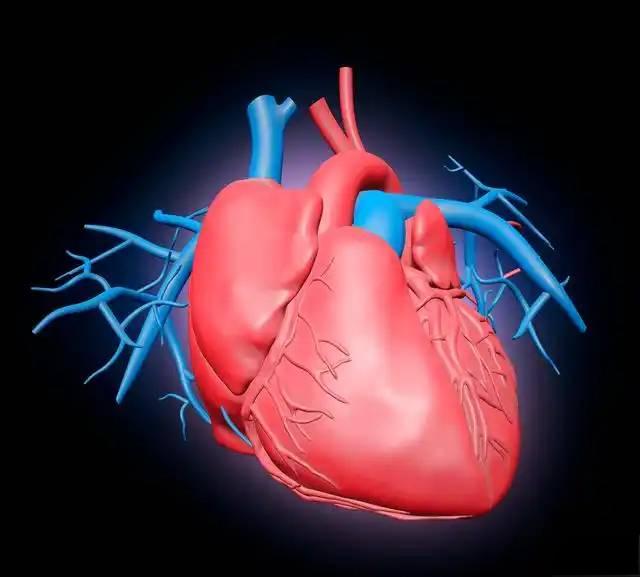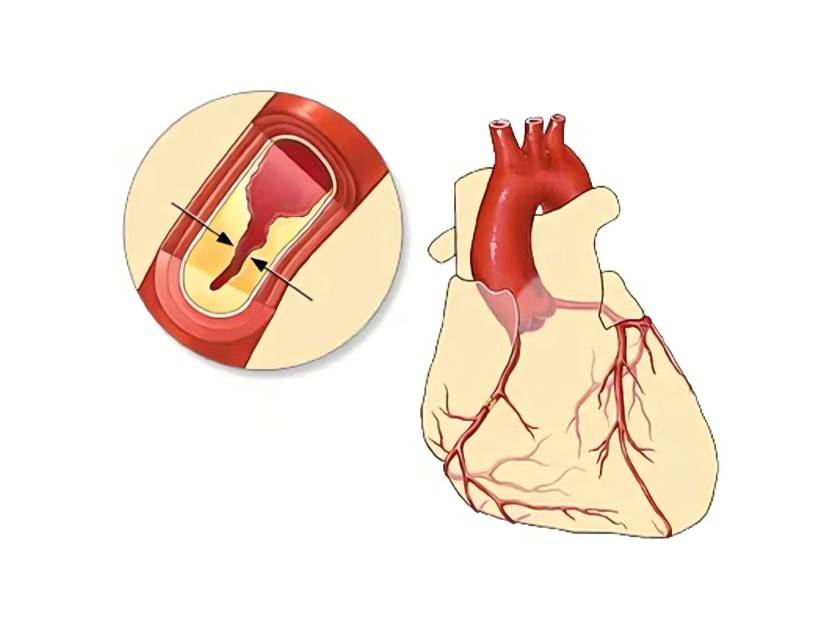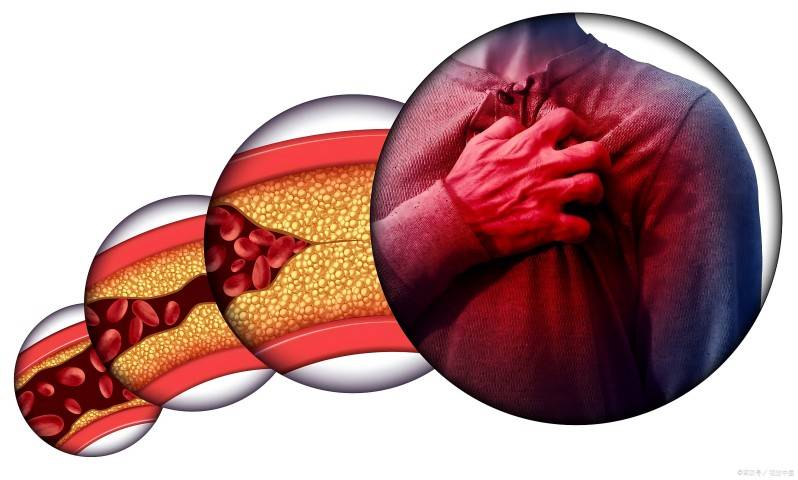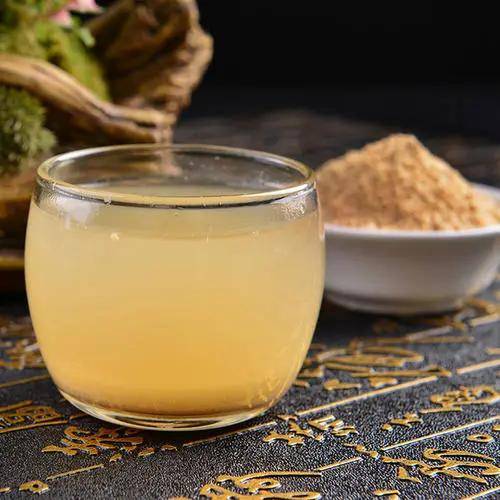Ginsenoside와 심혈관에 관한 연구
Modern pharmacological studies have confirmed that ginsenosides (GS) are the main active substances in ginseng. To date, more than 30 types of ginsenosides have been isolated from ginseng [1]. The total saponin is called ginsenoside R x, and each component is named R o, R a, R b1, R b2, R b3, R c, R d, R e, R f, Rg1, Rg2, Rg3, R h1, R h2, and R h3 in ascending order of the R f value from a thin-layer silica gel chromatogram. However, in recent years, most research on ginseng saponins has focused on R b1, R e, Rg1, R h2, etc. Ginseng saponins can be divided according to their chemical properties into: ginsenoside diol type (type A), including R b1, R b2, RC, R d, R h2, etc.; ginsenoside triol type (type B), including R e, R f, Rg1, Rg2, R hr, etc.; oleanolic acid type (type C) such as R o. Modern research has shown that ginsenosides have clinical significance for various diseases of the cardiovascular system, such as ischemic heart disease, arrhythmia, and heart failure [2]. The following is a summary of recent research on the pharmacological effects of ginsenosides on the cardiovascular system.
1. myocardial function에 미치는 영향
Tian Jianming 등 3)은 심근세포의 체외 배양법을 이용하여 저산소 및 글루코즈가 부족한 심근세포의 모델을 준비하였으며, ginsenoside Rg2가 저산소 및 글루코즈가 부족한 심근세포의 박동 진폭과 생존율을 유의하게 증가시킨다는 것을 발견하였다.또한 실험에서는 Rg2가 저산소 및 글루코스가 결핍된 심근세포에서 유리 Ca2+의 농도를 현저히 감소시키는 반면, KC l에 의해 유도된 심근세포로부터 Ca2+의 방출에는 큰 영향을 미치지 않는 것으로 관찰되었으며, 고농도에서는 CaC l2에 의한 세포 밖 Ca2+의 유입에 약한 억제 효과를 보인 반면, 저농도에서는 큰 영향을 미치지 않는 것으로 관찰되었다 [4].
Wang Tianxiao et al. [5] established a pressure overload ventricular remodeling model by ligating the abdominal aorta of rats to study the effect of ginsenoside Rb압력 과부하 심근비대가 있는 쥐에서 심실 리모델링 (ventricular remodeling in rats with pressure overload myocardial hypertrophy and its mechanism of action)ginsenoside Rb 가 쥐에서 심실 개조에 대한 보호 효과가 있다는 것이 밝혀졌는데, 이는 심실 개조가 있는 쥐에서 좌심실 수축기 및 확장기 기능을 개선하고, 항산화 효소 활성을 향상시키며, 활성산소와 혈관 수축 물질로 인한 심근 손상을 감소시키고, PGI2와 TXA2 사이의 불균형을 교정시키는 기작과 관련이 있을 것으로 보인다.
또한 수다원 등은 미국 인삼 잎에서 추출한 protopanaxadiol 군 사포닌 (PQDS)을 연구하여 PQDS 가 쥐에서 심근경색 후 심실 remodeling을 효과적으로 예방하고, 좌심실 내압의 최대 증가 및 감소 속도를 유의하게 증가시키며, 좌심실 용적, 좌심실 장축 길이, 좌심실 단축 길이,좌심실 절대체중과 좌심실 상대체중.또한 PQDS는 혈청 지질 과산화물과 심근 안지오텐신 II 및 아드레날린의 수치를 현저히 감소시키고 superoxide dismutase, catalase 및 glutathione peroxidase를 증가시킬 수 있습니다.이는 심장 내 안지오텐신 II의 국소적 생성을 억제하고 교감신경 말단으로부터 카테콜아민의 분비를 억제하는 것과 관련이 있을 것으로 추측되며, 심장 근육의 항산화 능력을 향상시킨다.
또한 인삼열매사포닌 (GFS)에 대한 연구 결과, GFS는 심장 근육의 수축기 및 확장기 기능을 향상시키고, 심근경색 후 펌프 고장을 완화하며, 심근 산소 소비를 감소시켜 심근 혈액 공급을 증가시키는데 도움이 되는 것으로 나타났다.
심장성 쇼크에 대한 효과 2
pentobarbital sodium을 사용하여 심장성 쇼크와 심부전의 개 모델을 만들었습니다.진세노사이드가 혈압 (BP), 좌심실수축기압 (LVSP), 좌심실압상승률 (LVdp/dtmax), 심박수 (HR) 및 심박출량 (CO)에 미치는 영향을 관찰하였다.그 결과 인삼총사포닌 10 mg/kg과 20 mg/kg, 정맥주사 후 LVdp/dtmax, LVSP, BP, CO 모두 증가하였고, 좌심실 말단확장압 (LVEDP)은 감소하였으며, HR은 느려졌다.Lv Wenwei 등 8은 개 관상동맥의 전방 하강 지부를 결박하여 심장성 쇼크의 개 모델을 준비하였고, 각각 Rg20.5, 1, 2 mg/kg을 정맥 주사하였다.
They found that ginsenoside Rg2 can significantly increase the mean arterial pressure (MBP), left ventricular end-diastolic pressure and maximum change rate (±dp/dtmax), cardiac output; significantly reduced total peripheral resistance, elevated ST segment of the heart surface electrocardiogram; reduced the scope of myocardial infarction; reduced serum creatine kinase (CPK), lactate dehydrogenase (LDH) and aspartate aminotransferase (AST) activity; increased arterial and venous oxygen content, and reduce myocardial oxygen consumption index and myocardial oxygen uptake rate. It can reduce the damage to myocardial cells and their mitochondria, and has a significant protective effect on ischemic myocardium in dogs with cardiogenic shock. Later, by studying the effect of ginsenoside diol-saponin (PDS) on acute cardiogenic shock [9-10], it was found that PDS can significantly increase MBP and dp/dtmax in shocked dogs; significantly reduced the concentrations of serum inflammatory cytokines interleukin-1 (IL-1), interleukin-6 (IL-6) and tumor necrosis factor-a, and reduced myocardial ischemia and the extent of ischemia, shrinking the area of myocardial infarction, lowering whole blood viscosity and hematocrit, and protecting dogs with acute cardiogenic shock.

심근허혈-재관류에 미치는 효과 3
티안장밍 (Tian Jianming) 등 11명은 쥐의 관상동맥의 전방 하강 분지를 결박했고, 결박된 3시간 후에 결박된 곳을 느슨하게 해 20분 동안 혈류를 회복시킨 뒤 심장을 빠르게 제거했다.apoptosis 가 검출되었으며, Rg 21.0 및 2.0 mg/kg의 사전 투여시 허혈에 의한 apoptosis를 감소시킬 수 있고, 허혈에 의한 DNA 단편화 밴드를 현저히 감소시킬 수 있음을 시험결과 알 수 있었다.인삼 saponin R e는 pro-apoptotic 유전자인 Bax의 발현을 억제하고 Bcl-2/Bax 비율을 증가시킴으로써 심근사멸을 억제할 수 있다.
성체 잡종견은 대동맥 폐쇄 1시간 전과 재관류 직후 총 ginsenosides (12.5 mg/kg) 가 포함된 생리식염수를 2회 정맥 주입하였다.혈역학적 변수, 세포내 유칼슘 농도, 심근세포의 미토콘드리아 인지질 함량, 미토콘드리아 칼슘 펌프 활성도, 심근 조직화학을 normothermic 체외순환을 통해 측정하였다.재관류 30분, 60분에 ginsenosides 가 재관류 기간 동안 수축기 및 확장기 기능을 유의하게 향상시키고, 심근세포 내 유리 칼슘의 농도를 유의하게 감소시키며, 미토콘드리아 인지질의 함량과 미토콘드리아 칼슘 펌프의 활성을 증가시키고, 부정맥 발생을 유의하게 감소시키는 것으로 나타났다.
심근조직화학적 검사 결과 허혈-재관류 후 ginsenoside는 심근조직구조를 기본적으로 정상으로 유지할 수 있었다.심근 허혈-재관류 손상에 대한 ginsenoside의 메커니즘은 주로 심근세포에서 미토콘드리아 칼슘 펌프의 활동을 보호하고, 미토콘드리아 인지질의 저하를 감소시키며, 막 시스템의 무결성을 보호한다;그리고 세포내 유리칼슘의 농도를 감소시키고 심근세포의 칼슘과부하를 방지하며 심근 재관류 손상을 방지한다.
Qu Shaochun 등 [12]은 관상동맥의 전방 하강 분지를 쥐에서 30분 동안 결박한 후 24시간 동안 재관류하는 방법으로 심근 허혈-재관류 손상의 실험 모델을 준비하였다.Ginseng Rb group saponins (G-Rb) were given to rats at doses of 25, 50 and 100 mg/kg·d-1 by continuous gavage for 7 days. it was found that G-Rb has a significant protective effect on experimental myocardial ischemia-reperfusion injury in rats, which may be related to its mechanism of enhancing the activity of antioxidant enzymes, reducing oxidative damage to the heart muscle by free radicals, correcting the imbalance between PGI2 and TXA2, and inhibiting platelet aggregation activity.

송청 등 13)은 자발성 고혈압 쥐 (SHR)에서 심근허혈-재관류 손상 (I-R)에 대한 ginsenoside saponin (GSLS) 전제의 보호효과와 그 발생 기전을 연구하였다.SHR은 GSLS 50, 100 mg/kg once/d를 I-R modeling 전 3주간 gavage로 투여하였고, 40분간 허혈, 30분간 재관류시 rat 혈압, 심장기능 및 심장혈역학적 지표를 측정하였으며, 생화학적 방법으로 myocardial ATPase, lactate dehydrogenase (LDH) 및 superoxide dismutase (SOD) 활성도와 malondialdehyde (MDA) 및 무함량을 측정하였다,그리고 심장과 간의 metallothionein (MT)의 함량을 알아보기 위해 카드뮴 헤모글로빈 포화법을 사용하였고, 면역조직화학적 방법을 사용하여 열충격단백질 70 (HSP70)의 발현을 확인하였다.GSLS 50과 100 m g/kg 사전 적응군이 I-R 손상 SHR의 심박수, 최고 좌심실압, ±dp/dtmax를 유의하게 향상시켰으며, 심근 ATPase 활성, LDH 누수 감소, 심근 SOD 활성 증가, NO 함량 증가, MDA 함량 감소, 심근 및 간 MT 함량 증가, 양성 심근 HSP70세포의 비율을 증가시키는 것으로 나타났다.그 작용 메커니즘은 SHR 심장의 수축 기능 개선, 심근 대사 개선, 항산화 활성 강화 및 내인성 심근 보호 물질 분비 유도와 관련이 있습니다.
심근경색에 미치는 효과 4
루펑 등 [14]은 개에서 관상동맥 (LAD)의 왼쪽 전방 하강 지점을 묶음으로써 급성 심근경색 모델을 확립했다.이번 연구를 통해 ginsenoside Rb1은 급성 허혈성 심근에 대한 보호효과가 현저하며, 작용기전은 심근허혈 중 유리지방산 (FFAs)의 대사장애 교정은 물론 활성산소를 제거하여 지질과산화를 방지하는 능력과 관련이 있을 것으로 보이며, 체내 항산화 효소의 활성을 증진시키는 것으로 나타났다.미국 인삼잎 20S-protopanaxadiol 군 saponin (PQDS)도 급성 심근허혈에 대한 보호효과가 있으며, 그 기전은 심생-부신 medulla 과다활동 억제, catecholamine (CA) 과다분비 감소 및 RAS 활성화 억제, angiotensin (Ang) 생성 감소, CA와 RAS의 상호 촉진에 의한 악순환 끊기와 관련이 있을 것으로 보인다.인삼열매사포닌 (GFS)은 또한 isoproterenol과 뇌하수체 adenylate cyclase-activating polypeptide에 의해 유발된 급성 심근허혈에 대한 보호 효과가 있다.인삼 saponin Rg2는 isoproterenol, sodium nitrite 및 뇌하수체 adenylate cyclase-activating polypeptide로 제조한 쥐에서 화학적 심근허혈 보호 효과가 있다.
류지 등 [15]은 개에서 청년을 결찰하여 급성 심근경색 모델을 확립했다.모델링한 후, ginsenoside PDS를 12.5, 25 mg/kg의 두 용량으로 대퇴정맥에 주입하였다.두 가지 용량 모두 심근경색률을 크게 줄일 수 있는 것으로 나타났다.미세구조 관찰 결과, PDS의 저용량 군에서 심근세포의 핵막은 손상되지 않았고, 핵은 불규칙했으며, 주변의 육종 구조가 명확하고, 미토콘드리아는 근실 사이에 세로 방향으로 배열되어 있으며, 세포질에서 작은 소포들을 볼 수 있었다;PDS 고용량군에서는 심근세포막의 구조가 온전하며, 근막의 어두운 띠와 밝은 띠의 구조가 선명하고, 근막의 배열이 비교적 깔끔하며, 근실 사이의 미토콘드리아가 비교적 크고, 세로 방향으로 배열되어 있고, 크리스테가 선명하게 보인다.두 투여군 모두에서 투여 4시간 후 혈청 내 NO와 nitric oxide synthase (NOS) 수치가 유의적으로 증가하였다.

Jin Yan et al. [16,17] studied the effects of ginsenoside Rg1 on neovascularization after acute myocardial infarction and its mechanism of action. An acute myocardial infarction model was established in Wistar rats, and the rats were given ginsenoside Rg1 low-dose (1 mg/kg) and high-dose (5 mg/kg) treatment groups by intraperitoneal injection. RT-PCR was used to detect the expression of vascular endothelial growth factor (VEGF) and hypoxia-inducible factor-1α (HIF-1α) mRNA in myocardial tissue in the infarct zone. The results showed that the treatment group had significantly lower myocardial enzymes and myocardial infarction areas, and the number of blood vessels in the infarct area increased steadily and continuously, which was significantly higher in the treatment group than in the control group. After myocardial infarction, the expression of VEGF and HIF-1α mRNA increased with the prolongation of ischemia (3, 7 and 10 d groups), and the treatment group showed a significant increase. At 14 d, the increase in VEGF stopped or decreased, while HIF-1α continued to rise; the VEGF expression in the sham operation group was significantly lower than that in each of the operation groups. Studies have shown that the acute phase of severe ischemia can stimulate myocardial tissue to produce large amounts of VEGF and HIF-1α, thereby protecting ischemic myocardium. Ginseng saponin Rg1 can stimulate angiogenesis in the myocardial infarction area and the establishment of collateral circulation by increasing the expression of the two.
In summary, pharmacological research on ginsenosides in cardiovascular medicine has already begun and continues to deepen. While continuously extracting and modifying to obtain more ginsenoside-type active substances, research on the pharmacological activity of ginsenosides is expected to identify compounds with stronger activity and specificity, accelerating the industrial production and clinical application of ginsenoside ingredients. Theoretical and systematic summaries of current research results on ginsenosides are of profound research significance.

참조
[1] 주리안케이, 왕보추, 탄준, 은행나무 빌로바 추출물과 ginsenosides 가 혈관 활성 물질에 미치는 효과.충청대학교 (자연과학편), 2007, 30 (4):136
[2] Wang Qiang, Mo Xuemei, Yang Xiaoying.심혈관 질환 치료에서 ginsenosides의 현대 연구 진행.Advances in Cardiovascular Diseases, 2006, 27 (3):325
[3] Tian Jianming.ginsenoside Rg-2가 심근세포의 진폭과 생존율에 미치는 영향.중국신약학회지, 2003, 12 (11):912
[4] 리태평.인삼사포닌의 약리학적 활성에 관한 연구 진행.생물교육, 2003, 28(4):1
[5] 왕띠아오, 위샤오펑, 취샤오춘.ginsenoside Rb 가 압력부하 심근비대증을 가진 쥐에서 심실 개조에 미치는 영향 및 그 작용기전.Shi Zhen, Traditional Chinese Medicine, 한의학, 2008, 19 (7):1615
[6] 수이다위안, 유샤오펑, 쿠샤오춘.미국산 인삼잎 20s-protopanaxadiol 군 사포닌이 쥐에서 실험적인 심실 리모델링 (ventricular remodeling)에 미치는 영향.중국약학학회지, 2007, 42 (2):108
[7] He Xiaoxi, Qu Shaochun, Yu Xiaofeng.인삼 열매 사포닌이 급성 심근경색을 가진 개에서 혈역학적 특성에 미치는 영향.지린대학교 (의과대학), 2008, 34(2):204
[8] Lv 웬웨이, 류지.급성 심장성 쇼크를 동반한 개의 심근세포에 대한 ginsenoside Rg2의 보호효과.지린대학교 (의과대학), 2003, 29(4):392
[9] Liu J. 진세노사이드 Rg2가 급성 심장성 쇼크를 가진 개에서 혈청 IL-1 수치에 미치는 영향.한의학, 2005, 27(11):1304
[10] Wang QJ, Liu J, Liu F.의 개에서 급성 심장성 쇼크에 대한 ginsenoside diol-saponin의 보호 효과.지린대학교 (의과학), 2005, 31(4):557
[11] Tian Jianming, Zheng Shuqiu.쥐의 심근허혈-재관류 손상에 의해 유발된 심근세포 사멸에 대한 ginsenoside Rg2의 보호효과.중국약리학회지, 2004, 20(4):480
[12] Qu Shaochun, Sui Cheng, Yu Xiaofeng.쥐의 실험적인 심근 허혈-재관류 손상에 대한 ginsenoside Rb의 보호효과.지린대학교 (의과학), 2007, 33(5):849
[13] 송청, 장샤오원, 쑤지웨이.자발성 고혈압 쥐의 심근허혈-재관류 손상에 대한 ginsenoside 전처리의 보호효과.중국약리학독성학회지 2008년, 22
(1):42
[14] 루펑, 수이다원.미국산 인삼잎 20S-protopanaxadiol saponins이 급성 심근경색 쥐에서 교감신경전달물질 및 renin-angiotensin 계에 미치는 영향.한약학, 2001, 32(7):619
[15] 류 J, 류 F, 왕 QJ.심근경색이 있는 개에서 ginsenosides 가 혈청 nitric oxide 및 nitric oxide synthase 농도에 미치는 영향.Chinese Journal of Experimental TCM, 2008, 14(4):46
[16] 진 Y, 류 GN.ginsenoside Rg1이 급성 심근경색 쥐에서 신생세포화에 미치는 영향.중국의대논문집 2007, 36 (5):517
[17] 진옌, 류기난.효과의 ginsenoside Rg1 VEGF과 HIF-1에 α 급성 심근경색 후다.PLA Medical Journal, 2006, 31 (11):1079


 영어
영어 프랑스
프랑스 스페인
스페인 러시아
러시아 한국
한국 일본
일본




